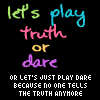There are two types of instructional technology: those with a systems approach, and those focusing on sensory technologies.
The definition of instructional technology prepared by the Association for Educational Communications and Technology (AECT) Definitions and Terminology Committee is as follows:
Instructional Technology is the theory and practice of design, development, utilization, management, and evaluation of processes and resources for learning. ... The words Instructional Technology in the definition mean a discipline devoted to techniques or ways to make learning more efficient based on theory but theory in its broadest sense, not just scientific theory. ... Theory consists of concepts, constructs, principles, and propositions that serve as the body of knowledge. Practice is the application of that knowledge to solve problems. Practice can also contribute to the knowledge base through information gained from experience. ... Of design, development, utilization, management, and evaluation ... refer to both areas of the knowledge base and to functions performed by professionals in the field. ... Processes are a series of operations or activities directed towards a particular result. ... Resources are sources of support for learning, including support systems and instructional materials and environments. ... The purpose of instructional technology is to affect and effect learning (Seels & Richey, 1994, pp. 1-9).
History of Instructional Technology
The first use of instructional technology cannot be attributed to a specific person or time. Many histories of instructional technology start in the early 1900s, while others go back to the 1600s. This depends on the definition of instructional technology. Definitions that focus on a systems approach tend to reach further back in history, while those definitions focused on sensory devices are relatively more recent.
The use of audio and visual instruction was boosted as a military response to the problems of a labor shortage during WWII in the United States. There was a definitive need to fill the factories with skilled labor. Instructional technology provided a methodology for training in a systematic and efficient manner.
With it came the use of highly structured manuals, instructional films, and standardized tests. Thomas Edison saw the value of instructional technology in films but did not formalize the science of instruction as the US military did so well.
[edit] Instructional Technology Today
Instructional technology is a growing field of study which uses technology as a means to solve educational challenges, both in the classroom and in distance learning environments.
While instructional technology promises solutions to many educational problems, resistance from faculty and administrators to the use of technology in the classroom is not unusual. This reaction can arise from the belief - or fear - that the ultimate aim of instructional technology is to reduce or even remove the human element of instruction. Most instructional technologists however, would counter with this claim that education will always require human intervention from instructors or facilitators.
Many graduate programs are producing instructional designers, who increasingly are being employed by industry and universities to create materials for distance education programs. These professionals often employ e-learning tools, which provide distance learners the opportunity to interact with instructors and experts in the field, even if they are not located physically close to each other.
[edit] Learning Theory and Instructional Technology
The purpose of instructional technology, of course, is the promotion of learning. Learning theory (education) has influenced Instructional design and Instructional designers (the practitioners of Instructional Technology). Instructional Technologies promote communication and interactivity. These two come together under the general heading of Interaction.
Moore (1989) argues that there are three types of learner interaction (learner-content, learner-instructor, and learner-learner interactions). In the years since Moore's article, several philosophical views have surfaced that relate Instructional technology to these types of interaction.
Most traditional researchers (those subscribing to Cognitivism) argue that learner-content interaction is perhaps the most important endeavor of Instructional technology. Some researchers (those subscribing to constructivism) argue that Moore's social interactions, (learner-instructor and learner-learner interactions), are as useful as learner-content interaction.
[edit] Areas
Within the field of instructional technology, there are many specific areas of focus. While instructional technology can apply to the military and corporate settings, educational technology is instructional technology applied to a learning and teaching environment.
Razavi (2005) advocates that educational technology covers instructional technology. It includes instructional technology and the field study in human teaching and learning. So educational technology is broader than instructional technology. Instructional technology itself is consisted from two major parts. One is teaching technology and another is learning technology. In the education industry, the term "instructional technology" is frequently used interchangeably with "educational technology."
Human Performance Technology (HPT) has a focus on corporate environments. Learning sciences are a growing area of focus dealing instructional techniques and learning theories
Thursday, June 14, 2007
Instructional technology
Subscribe to:
Post Comments (Atom)






0 comments:
Post a Comment